What to Do with Used Tea Leaves: 10 Creative Uses
When you've finished your cup of tea, you might be surprised to learn that the steeped leaves still have much to offer. Used tea leaves possess numerous benefits that can be eco-friendly and practical for everyday use.
In the Garden:
- Fertilizer: Tea leaves are a rich source of nitrogen, which promotes leafy plant growth. Sprinkle them around your plants to enrich the soil.
- Composting: Add used tea leaves to your compost as they help accelerate the decomposition process.
In the Home:
Bestsellers
- Deodorizing: Keep your refrigerator odor-free by placing dry tea leaves in a small bowl inside.
- Cleaning: Mildly abrasive, damp tea leaves can help in scrubbing dirty dishes, pans, and surfaces.
For Personal Care:
- Exfoliating: Gently rub wet tea leaves on your skin to exfoliate and rejuvenate.
- Bathing: Add used tea leaves to your bath for a relaxing experience. They can reduce inflammation and soothe the skin.
Crafting and Freshening:
- Dyeing fabric: Simmer used leaves in water to create a natural dye for fabrics.
- Freshening Carpets: Scatter dry tea leaves on your carpet, let them sit, then vacuum for a refreshed scent.
By re-purposing your tea leaves, you contribute to a more sustainable lifestyle while enjoying these simple, natural benefits.
Gardening with Tea Leaves
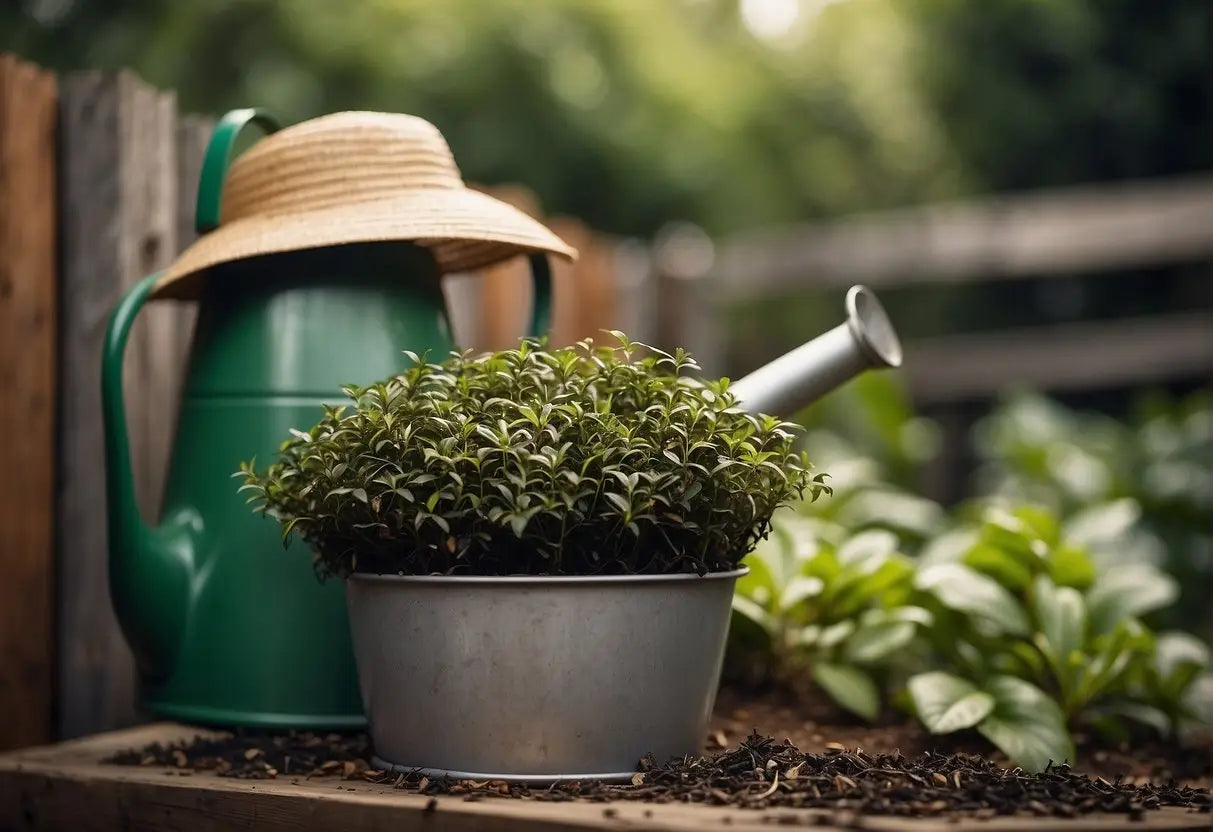
Used tea leaves offer a range of benefits for your garden, from nourishing the soil to deterring pests. Here's how to make the most of them.
Fertilizer
Adding tea leaves to your garden soil can provide plants with nourishing organic matter. Since tea leaves contain nutrients like nitrogen, they can help in the growth of your plants.
- Method: Mix wet tea leaves into the soil around your plants.
- Frequency: Once a month for optimal nutrient absorption.
Pest Repellent
Tea leaves can be used to keep pests at bay due to their caffeine content and natural odors.
- Application: Sprinkle dry tea leaves around the base of your plants.
- Targets: Slugs and rodents may be repelled by the scent of tea leaves.
Composting
Used tea leaves are an excellent addition to your compost pile as they speed up the decomposition process.
- Instructions: Scatter tea leaves throughout your compost.
- Benefits: Enhance compost quality with tea's nitrogen content.
Acidifying Soil
Certain plants, like azaleas and blueberries, thrive in acidic soil. Tea leaves can help to lower the pH of your soil over time.
- How to Use: Mix tea leaves into the soil near acid-loving plants.
- Note: Monitor soil pH regularly to avoid over-acidification.
Seed Starter
The nutrients in tea leaves can give seeds a healthy start.
- Method: Place damp tea leaves at the bottom of your seed trays.
- Advantage: Provides seeds with an initial boost of nutrients as they germinate.
Household Uses for Tea Leaves
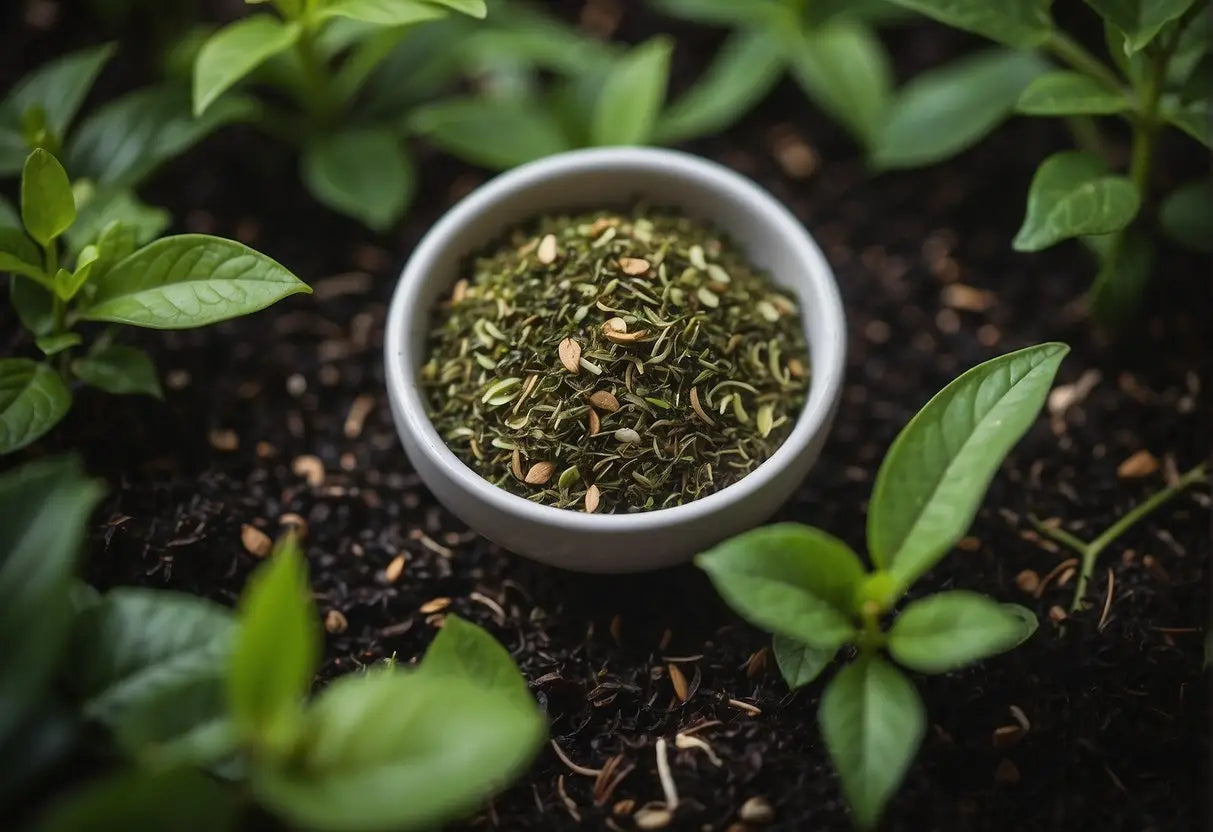
Used tea leaves have a variety of applications in your household, from cleaning to freshening up your refrigerator. Here’s how you can repurpose them effectively.
Lao Ban Zhang
Cleaning Agent
Tea leaves can be a gentle abrasive, ideal for cleaning wooden furniture and floors. You can use damp leaves to scrub surfaces, trapping dust and polishing wood.
-
Wooden Surfaces:
- Dry used leaves slightly.
- Sprinkle them over wooden surfaces.
- Use a cloth to gently scrub.
For tough stains: steep the leaves in boiling water, let the water cool, and then use it to clean.
For floors: sweep with tea leaves directly.
For windows: clean with brewed tea water.
Deodorizer
Tea leaves absorb odors effectively, providing a natural way to neutralize bad smells in your home.
-
Carpets and Rugs:
- Sprinkle dry used tea leaves.
- Let them sit for 20 minutes.
- Vacuum the area clean.
-
Shoes:
- Place dry leaves in a breathable fabric pouch.
- Insert into shoes overnight.
Natural Dye
Used tea leaves contain tannins that can dye fabric and paper, giving them an antique look.
-
Instructions:
- Boil used tea leaves.
- Strain the liquid and use as dye.
Example Applications: Staining paper for art projects, dyeing cloth napkins for a rustic aesthetic.
Refrigerator Freshness
Place a bowl of dry used tea leaves in the back of your refrigerator to help keep it smelling fresh. Remember to replace the leaves every few days for optimal freshness.
Personal Care
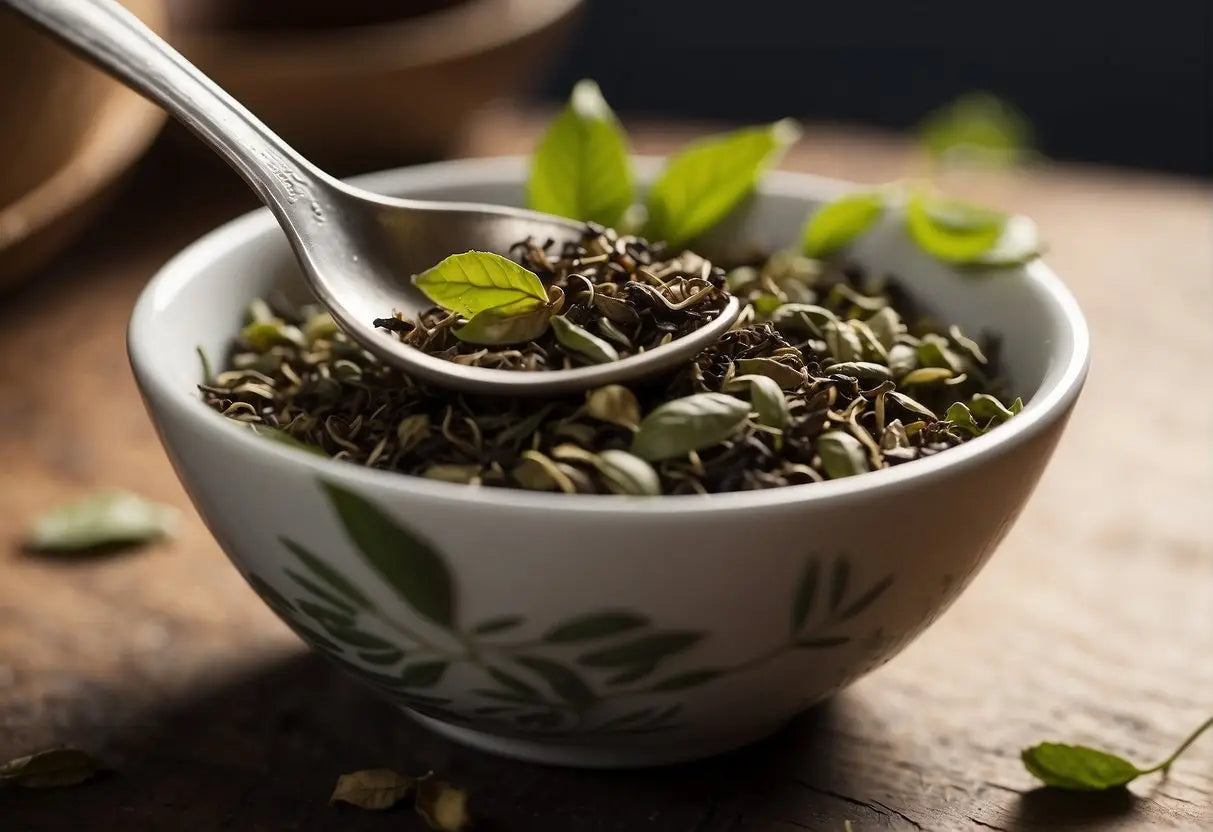
Used tea leaves possess beneficial properties that can be repurposed for your personal care routine, particularly for skin and hair care.
Skin Care
Exfoliation:
- Mix used green tea leaves with honey to create a natural exfoliating paste.
- Massage gently onto your face in circular motions, then rinse with warm water.
Soothing Bath:
- Fill a sachet with dry used tea leaves and place it in your bathwater.
- The tea leaves will help soothe your skin and can reduce body odor.
Hair Treatment
Hair Rinse:
- Steep used tea leaves in boiling water and allow the liquid to cool.
- After your regular shampoo, rinse your hair with this tea infusion to add shine and possibly enhance hair color.
Scalp Treatment:
- Create a scalp scrub by mixing used tea leaves with coconut oil.
- Apply it to your scalp, massage gently, and wash off with your regular shampoo to potentially remove product buildup and soothe the scalp.
Crafting with Tea Leaves
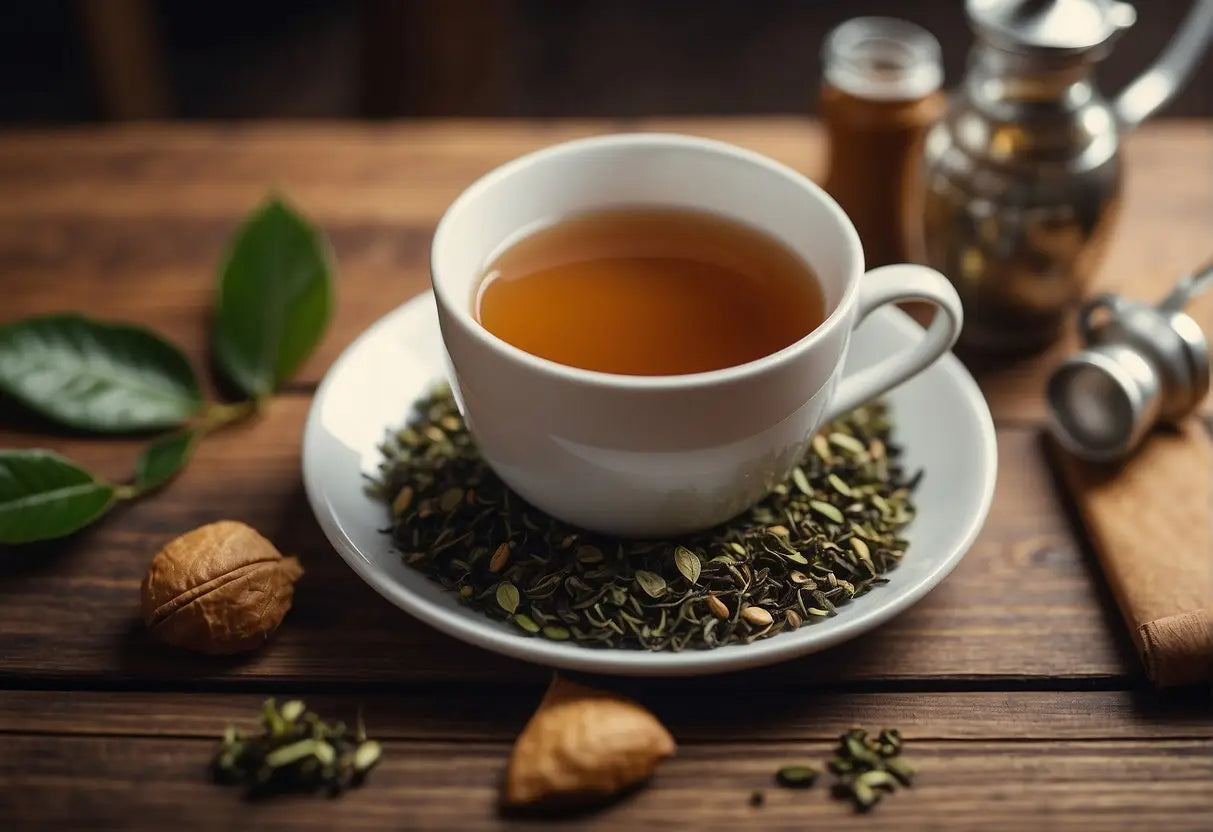
Used tea leaves offer a unique medium for crafting, providing both visual appeal and a subtle fragrance. They can be incorporated into various creative projects, such as homemade air fresheners and potpourri, adding a touch of personalization and natural scent to your home.
DIY Air Fresheners
-
Materials Needed:
- Used tea leaves (dried)
- Small fabric pouches or sachets
- Ribbon or string
-
Instructions:
- Ensure your used tea leaves are completely dried to prevent mold.
- Fill the fabric pouches with the dried tea leaves.
- Secure the pouches with ribbon or string.
- Place them in drawers, closets, or any area you wish to freshen up.
These homemade air fresheners using dried tea leaves are a simple and eco-friendly way to maintain a refreshing atmosphere in your living spaces.
Potpourri
-
Materials Needed:
- Dried used tea leaves
- Dried flowers or citrus peels
- Essential oils (optional)
-
Instructions:
- Mix dried tea leaves with your choice of dried flowers or citrus peels for a varied texture.
- Add a few drops of essential oils to enhance the fragrance, if desired.
- Display the mixture in an open bowl or jar to subtly perfume your room.
Creating potpourri with used tea leaves is an excellent method to repurpose them while infusing your home with a comforting and inviting aroma.
Kitchen Hacks
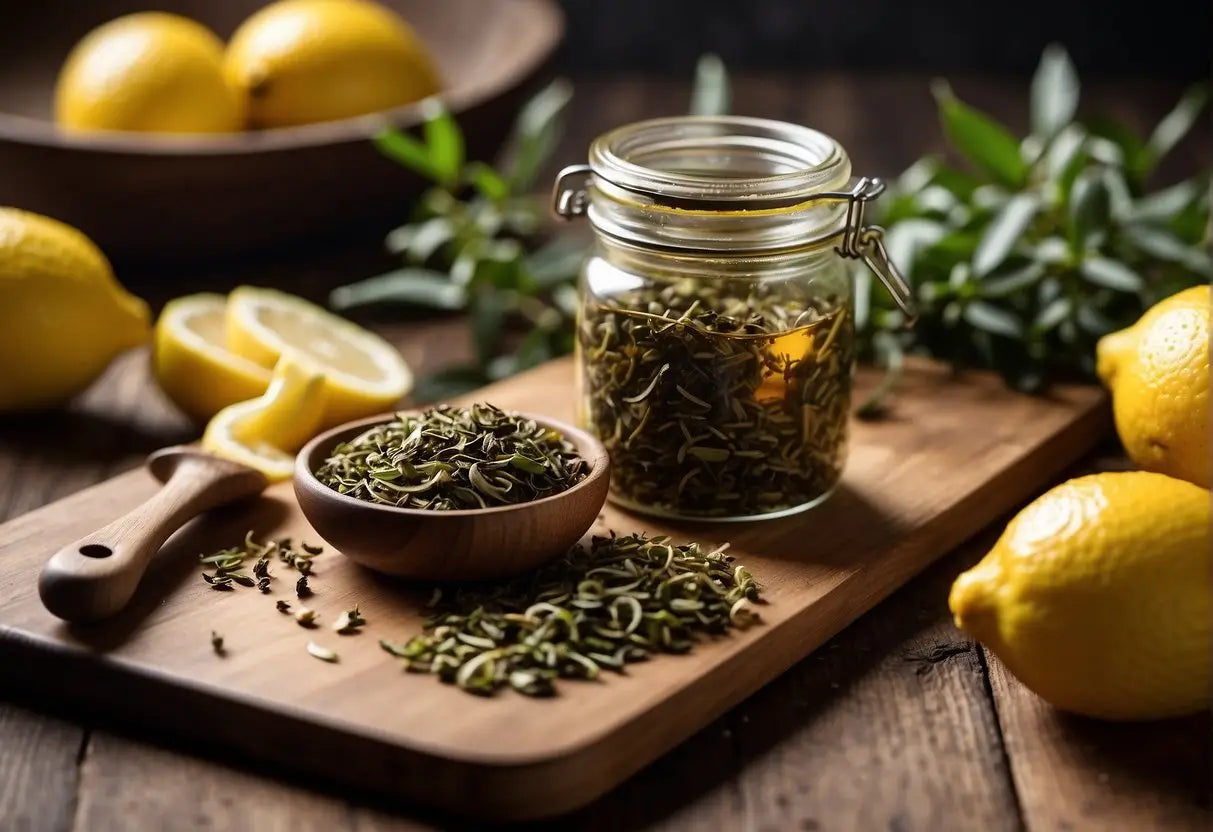
Used tea leaves have surprising benefits in the kitchen. They can be particularly effective in two areas: tenderizing meat and enhancing the flavor of foods.
Meat Tenderizer
Tea Leaves as Natural Tenderizers:
- Marinating: Soak your leaves in warm water to create a concentrated tea. Use this liquid to marinate your meats for 2-4 hours before cooking to help break down proteins and tenderize the meat.
- Dry Rub: Dry out your used tea leaves and crush them into a powder. Combine with herbs and spices to create a flavorful rub for meats.
Note: Green tea leaves work best for their slightly astringent properties.
Enhancing Flavor
Infusing Taste with Tea Leaves:
- Cooking Grains: Add used tea leaves to the water when boiling rice, quinoa, or couscous to infuse a subtle aroma and interesting twist to your dishes.
- Seasoning Vegetables: Mix finely chopped used tea leaves with oil and your choice of seasoning to coat vegetables before roasting.
| Ingredient | Method | Expected Effect |
|---|---|---|
| Grains (rice, quinoa) | Boil with tea leaves | Subtle tea fragrance |
| Roast Vegetables | Coat with tea-infused oil | Enhanced flavor |
Steeping these tips into your cooking routine will allow you to extract the full potential of used tea leaves.
Tea Leaf Recycling Tips
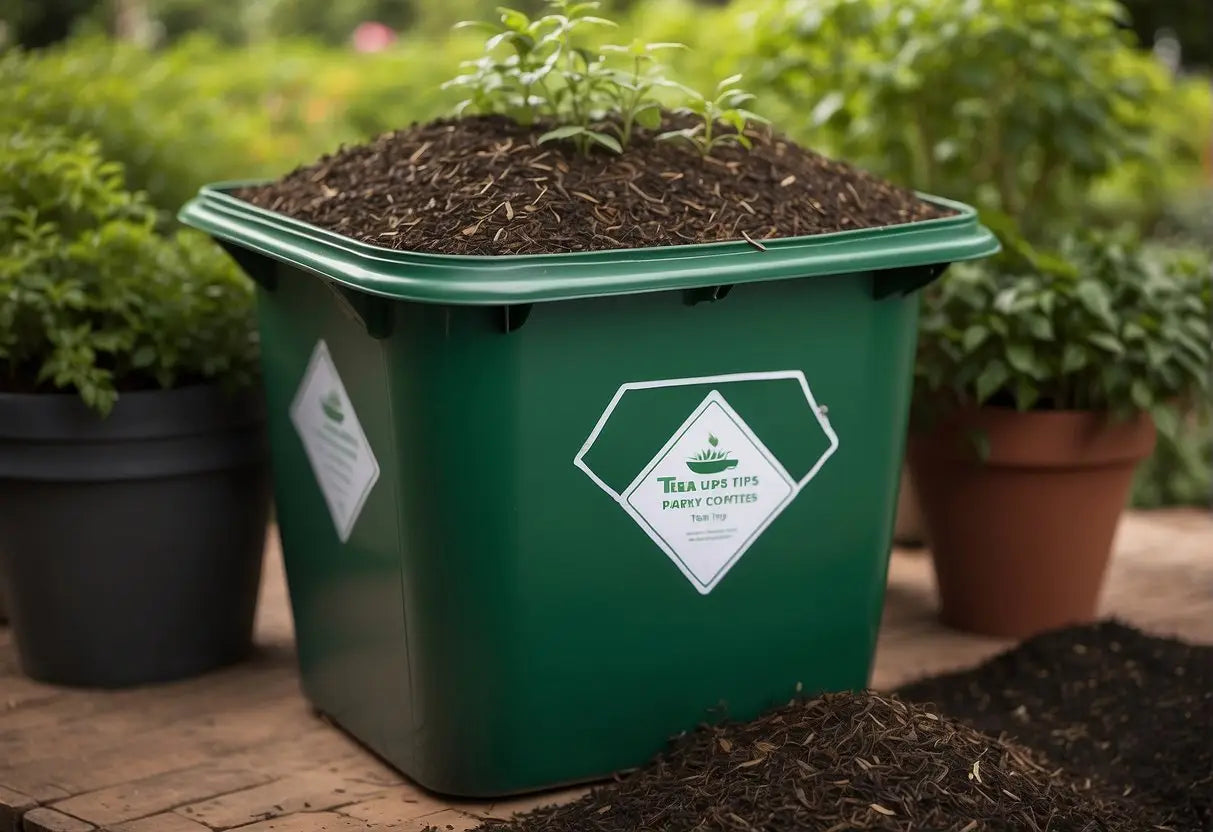
After enjoying your cup of tea, consider these resourceful ways to give used tea leaves a second life:
Composting: Enhance your compost pile by adding steeped tea leaves. They're a source of nitrogen, aiding in compost decomposition.
Acid-Loving Plants: Use tea leaves as a mild fertilizer for plants like azaleas and blueberries, which thrive in acidic soil.
Table 1: Fertilizing with Tea Leaves
| Plant Type | Benefits | Application Frequency |
|---|---|---|
| Acid-Loving | Soil acidity | Once a month |
| General Plants | Nutrient boost | Every 2-3 weeks |
Natural Deodorizers: Place dry used tea leaves in a bowl to absorb odors in your refrigerator or sprinkle them in litter boxes to reduce smells.
-
Foot Soak: Soothe your feet by steeping them in a basin of warm water infused with used tea leaves.
-
Cleaning Agent: Gently scrub away dirt and grime on mirrors and floors using damp tea leaves.
Remember:
- Rinse used tea leaves before applying them to plants to remove any remaining tea.
- Be aware of the caffeine content in tea leaves when using them as plant fertilizer. Too much can harm sensitive plants.
- Avoid using tea leaves that have additives or flavorings, as these can be detrimental to plants and soil health.
Frequently Asked Questions
In this section, you'll find practical ways to reuse tea leaves, from enhancing your garden to culinary experimentation and skincare.
How can used tea leaves be beneficial for gardening purposes?
Used tea leaves add nutrients such as nitrogen to the soil, which can help improve plant growth. They also increase the soil's acidity, benefiting acid-loving plants.
Are there any culinary uses for leftover tea leaves?
Yes, you can incorporate used tea leaves into recipes like marinades to impart subtle flavors or mix them into dough for baked goods for added texture and taste.
What are the potential skin care benefits of recycled tea leaves?
Tea leaves contain antioxidants that can help soothe the skin. You can create a scrub or a bath soak with them to potentially benefit from these properties.
How should one store used tea leaves for extended use?
Store used tea leaves in a well-ventilated area to dry them out, then transfer them to an airtight container and keep them in the refrigerator to extend their usability.
Can expired tea leaves be repurposed effectively?
Yes, even expired tea leaves can be used as a deodorizer to absorb unwanted odors in your fridge or as a cleaning agent for greasy surfaces.
Which types of plants thrive with the addition of tea leaves to their soil?
Acid-loving plants such as roses, azaleas, and blueberries can especially benefit from the addition of tea leaves to their soil, as it can improve soil structure and acidity.
← Older post Newer post →











